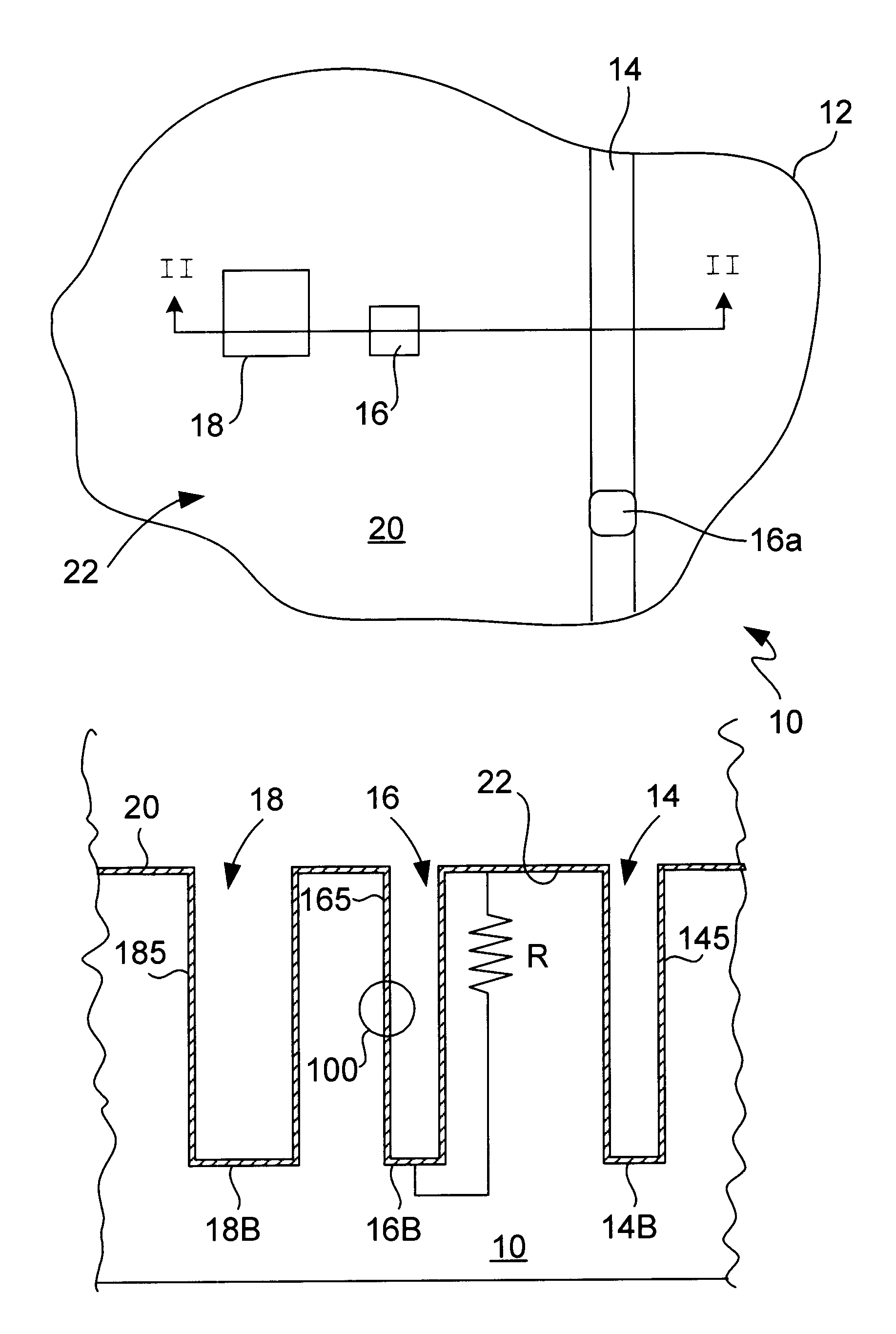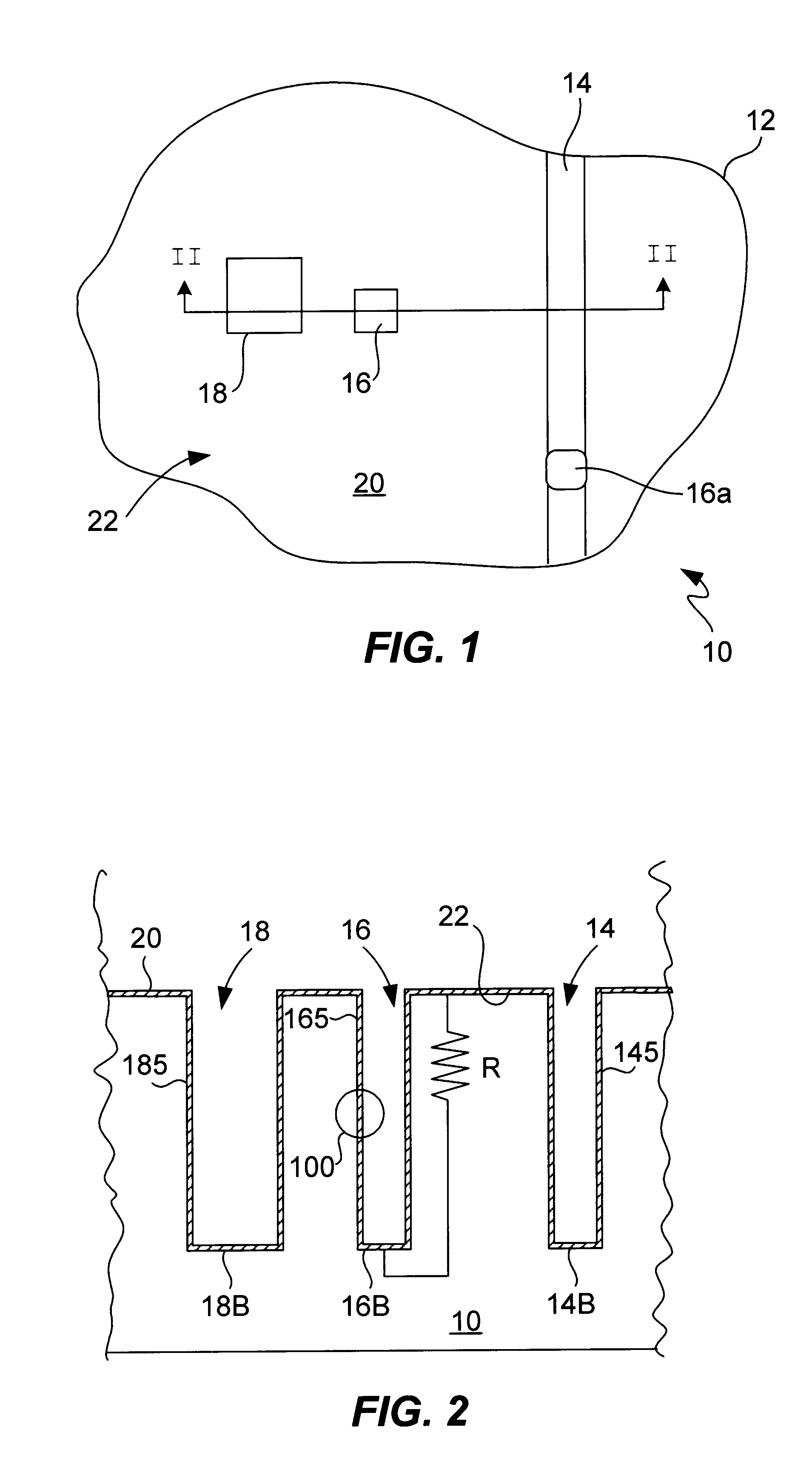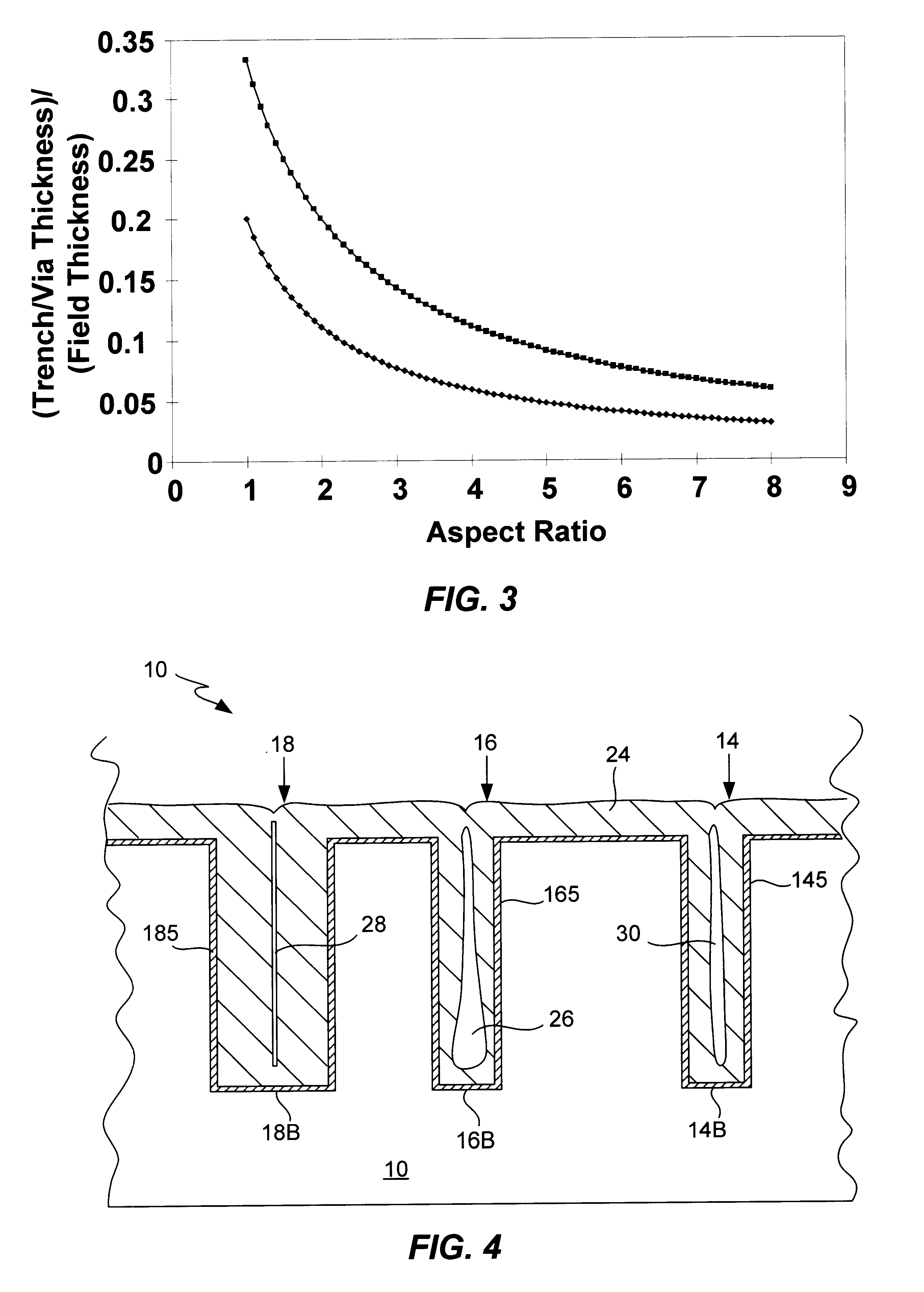Process for electroplating metal into microscopic recessed features
a technology of recessed features and electrochemical deposition, which is applied in the direction of superimposed coating process, printed element electric connection formation, coating, etc., can solve the problems of poor electroplating, poor electrical quality of feature sidewalls and bottoms, and increased difficulty in electroplating without seams and/or voids, etc., to achieve fast plating rate, increase the aspect ratio, and reduce the effect of surface reaction resistan
- Summary
- Abstract
- Description
- Claims
- Application Information
AI Technical Summary
Benefits of technology
Problems solved by technology
Method used
Image
Examples
Embodiment Construction
[0074]In the following description and figures, similar reference numbers are used to identify similar elements.
[0075]The present invention is directed towards the plating of copper onto the surfaces of high AR features as would typically be encountered in the fabrication of integrated circuits. However, it is not the intent of the present inventors that the invention be inherently so limited. Procedures described herein will find application in other areas of the field of electrodeposition. However, to provide concrete and definite expression, we describe in detail herein, the plating of copper.
[0076]Typical electroplating baths will contain the metal to be plated, the associated anions in a typically acid solution. Copper electroplating is typically performed from a solution of CuSO4 dissolved in an aqueous solution of sulfuric acid. In addition to these major constituents of the plating bath, it is common for plating baths to contain several additives. “Additives” is intended to ...
PUM
| Property | Measurement | Unit |
|---|---|---|
| voltage | aaaaa | aaaaa |
| thickness | aaaaa | aaaaa |
| current density | aaaaa | aaaaa |
Abstract
Description
Claims
Application Information
 Login to View More
Login to View More - R&D
- Intellectual Property
- Life Sciences
- Materials
- Tech Scout
- Unparalleled Data Quality
- Higher Quality Content
- 60% Fewer Hallucinations
Browse by: Latest US Patents, China's latest patents, Technical Efficacy Thesaurus, Application Domain, Technology Topic, Popular Technical Reports.
© 2025 PatSnap. All rights reserved.Legal|Privacy policy|Modern Slavery Act Transparency Statement|Sitemap|About US| Contact US: help@patsnap.com



